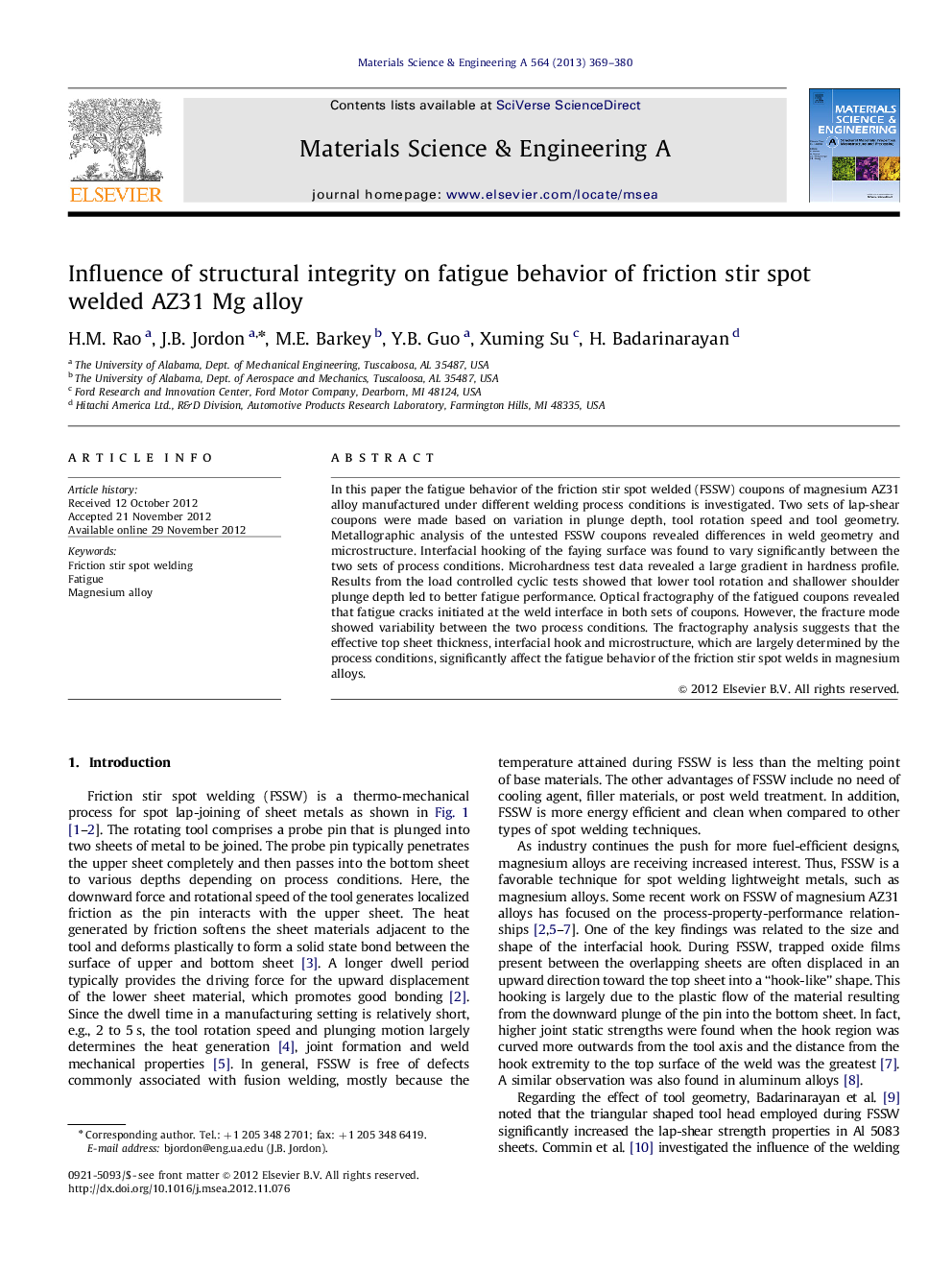| Article ID | Journal | Published Year | Pages | File Type |
|---|---|---|---|---|
| 7983432 | Materials Science and Engineering: A | 2013 | 12 Pages |
Abstract
In this paper the fatigue behavior of the friction stir spot welded (FSSW) coupons of magnesium AZ31 alloy manufactured under different welding process conditions is investigated. Two sets of lap-shear coupons were made based on variation in plunge depth, tool rotation speed and tool geometry. Metallographic analysis of the untested FSSW coupons revealed differences in weld geometry and microstructure. Interfacial hooking of the faying surface was found to vary significantly between the two sets of process conditions. Microhardness test data revealed a large gradient in hardness profile. Results from the load controlled cyclic tests showed that lower tool rotation and shallower shoulder plunge depth led to better fatigue performance. Optical fractography of the fatigued coupons revealed that fatigue cracks initiated at the weld interface in both sets of coupons. However, the fracture mode showed variability between the two process conditions. The fractography analysis suggests that the effective top sheet thickness, interfacial hook and microstructure, which are largely determined by the process conditions, significantly affect the fatigue behavior of the friction stir spot welds in magnesium alloys.
Related Topics
Physical Sciences and Engineering
Materials Science
Materials Science (General)
Authors
H.M. Rao, J.B. Jordon, M.E. Barkey, Y.B. Guo, Xuming Su, H. Badarinarayan,
